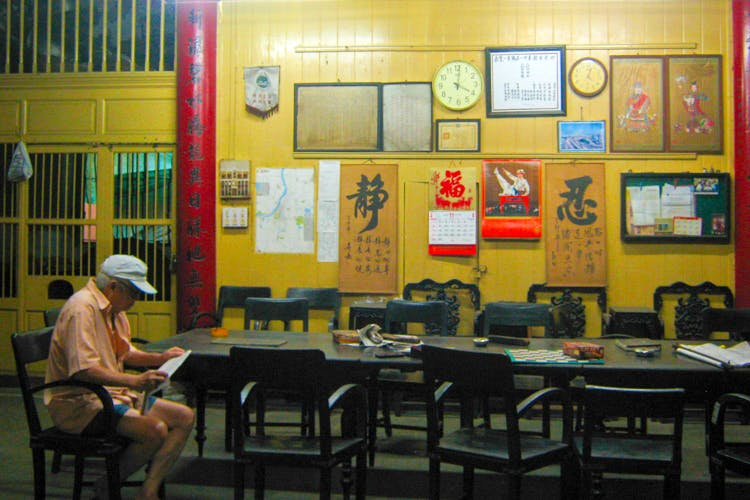Play a game of mah jong, buy handmade shoes, pick up bamboo steamers and black fungus for your kitchen – roaming around the streets of Kolkata’s Chinatown is a magical experience.
Play Mah Jong, Eat Baos Or Buy Handmade Shoes: Your Guide To India's Oldest Chinatown
Mah Jong At A Chinese Club
If you walk around a bit in Chinatown (or the Tiretti Bazaar area), you will come across several Chinese clubs/churches in its narrow lanes. These were set up to nurture social and cultural aspects of the community. They are actually traditional Chinese temples. The ‘church’ tag came from the British colonial administration.
These temples also serve as ‘clubs’ – meeting points for people to gather in the evenings, or to pray, socialise and also to host festivals. In the evenings, you will find people clustered on the upper floor of the Gee Hing Temple playing mah jong, the clackety-clack sound of the green and red tiles resonating in the air.
In Chhatawalla Gali nearby is the two-storeyed, red colonial building that is the Toong On Church. Built in 1924, it once housed the famous Nanking restaurant, Kolkata’s first Chinese restaurant and a hotspot for spotting celebrities such as Dilip Kumar, Meena Kumari and Shammi Kapoor. Dibakar Banerjee’s film Detective Byomkesh Bakshi had several scenes set in the restaurant.
Walk a few minutes and you will come across the 108-year-old Sea Ip Church. This was set up in 1905 by migrants from four counties in China’s Guangdong Province. The wooden staircase leading to the altar is from China!
Read India's Only Chinese Newspaper
Sometimes at a club or some restaurant, or a Chinese grocery store, you will find people in the area poring over a newspaper written in Chinese. This is the Overseas Chinese Commerce of India – probably India’s last remaining Chinese language newspaper. It used to be 100% handwritten once upon a time with characters in gorgeous calligraphy.
Stock Up On Chinese Sauces, Mushrooms And Spices
The streets of Tiretti are great for gourmands who want to stock up on Chinese spices, noodles, mushroom et al.The area still has a few old Chinese provision stores left that stock an amazing array of dried fungus and shiitake mushrooms, spice powders, rice sticks and oil sticks for soups, sausages, therapeutic teas and balms, and pink-hued prawn wafers.
Hap Hing Co is one of the oldest Chinese provision stores in Kolkata. It is run by Stella Chen whose grandparents came to Kolkata in 1930. There is Sing Cheung Sauce Factory and Pou Chong Bros Pvt Ltd – both are well-known and popular Chinese goods stores.
Have Some Baos And Chimney Soup
Chinatown has many old joints serving some of the best Chinese food Kolkata has to offer. Get some delicious pot stickers at D’Ley (“the land of good luck”) restaurant.
Eu Chew further down on Bentinck Street is a legend. A steep flight of stairs leads to the first-floor of the broken building behind the petrol pump on Mission Row. Set up in 1927, the owners (the Huang family) say it is the oldest restaurant in the country started by a Chinese family. You have to try their legendary chimney soup (the pots used are the ones their ancestors had got from China!). Also try their Roast Chilli Pork and Josephine noodles (named after the owner’s wife and available only on request).
Buy Handcrafted Shoes
There was a time when Bentinck Street in central Kolkata had rows and rows of Chinese shoemakers. People would throng Bentinck Street to buy the handmade shoes which were durable and stylish.
Now, the shops are mostly gone as people do not have the time, or just do not understand the value of handmade shoes any more perhaps. A handful of shops are still left, like Sen-Fo & Co. If you want to encase your feet in a made-to-order snug fit, head here.
Do The Lion Dance
In February, dragon and lion dancers usher in the Chinese New Year. A dragon dance show starts off the festival and celebrations are spread over 10 to 15 days. The Lion Dancers’ groups begin with performances in Chinese temples after which they visit neighbourhood establishments and houses to bring good luck.

